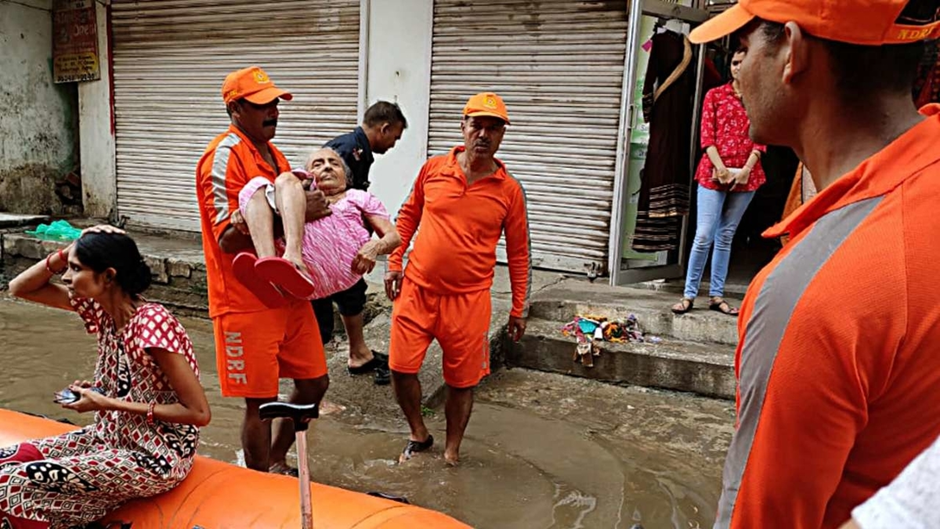- Courses
- GS Full Course 1 Year
- GS Full Course 2 Year
- GS Full Course 3 Year
- GS Full Course Till Selection
- Answer Alpha: Mains 2025 Mentorship
- MEP (Mains Enrichment Programme) Data, Facts
- Essay Target – 150+ Marks
- Online Program
- GS Recorded Course
- Polity
- Geography
- Economy
- Ancient, Medieval and Art & Culture AMAC
- Modern India, Post Independence & World History
- Environment
- Governance
- Science & Technology
- International Relations and Internal Security
- Disaster Management
- Ethics
- NCERT Current Affairs
- Indian Society and Social Issue
- NCERT- Science and Technology
- NCERT - Geography
- NCERT - Ancient History
- NCERT- World History
- NCERT Modern History
- CSAT
- 5 LAYERED ARJUNA Mentorship
- Public Administration Optional
- ABOUT US
- OUR TOPPERS
- TEST SERIES
- FREE STUDY MATERIAL
- VIDEOS
- CONTACT US
Disaster Management (Amendment) Bill 2024
Disaster Management (Amendment) Bill 2024

The Disaster Management (Amendment) Bill, 2024 has been introduced in the Lok Sabha to amend the existing Disaster Management Act, 2005. The Bill aims to modify several aspects of disaster management in India, but it has sparked debate due to concerns about increased centralisation and its implications on disaster response effectiveness.
Key Provisions of the Disaster Management (Amendment) Bill, 2024
-
Preparation of Disaster Management Plans:
- Current System (2005 Act): National Executive Committee (NEC) and State Executive Committees (SECs) assist the National Disaster Management Authority (NDMA) and State Disaster Management Authorities (SDMAs) in plan preparation.
- Proposed Change: NDMA and SDMAs will directly prepare disaster management plans, bypassing NEC and SECs. NDMA will also conduct periodic risk assessments.
-
National and State Disaster Database:
- Mandates the creation of a comprehensive disaster database at both national and state levels.
- Database will include disaster assessments, fund allocation, expenditure, preparedness plans, and risk registers.
-
Appointments to NDMA:
- Current System: Appointments are made by the central government.
- Proposed Change: NDMA can specify staffing needs and appoint experts with central government approval.
-
Urban Disaster Management Authority (UDMA):
- Establishes UDMA for state capitals and large cities (excluding Delhi and Chandigarh).
- Led by municipal commissioners and district collectors, focusing on urban disaster management.
-
State Disaster Response Force (SDRF):
- Current System: National Disaster Response Force (NDRF) handles specialized disaster response.
- Proposed Change: States can create SDRFs with defined functions and terms of service to enhance local response capabilities.
-
Statutory Status to Existing Committees:
- Grants statutory status to the National Crisis Management Committee (NCMC) and the High-Level Committee (HLC).
- NCMC, led by the Cabinet Secretary, will handle major disasters, while HLC, led by the Minister overseeing disaster management, will manage financial assistance.
-
Penalties and Directives:
- Introduces a new Section 60A allowing the Central and State governments to direct actions to reduce disaster impacts and impose penalties up to Rs 10,000.
Concerns Regarding the Disaster Management (Amendment) Bill, 2024
-
Centralisation of Power:
- Increases centralisation, potentially complicating the disaster response chain and leading to delays.
- Reduces specific usage guidelines for the National Disaster Response Fund (NDRF), raising concerns about centralisation.
-
Inadequate Local Resources:
- Bill does not address potential resource and funding gaps at the local level for maintaining UDAMAs.
-
Ensuring Disaster Relief as a Legal Right:
- The Bill does not make disaster relief a justiciable right, leading to variations in relief measures.
-
Integration of Climate Change:
- Lacks provisions for integrating climate change impacts into disaster risk management.
-
Integration Issues:
- Transitioning responsibilities from NEC and SECs to NDMA and SDMAs might face integration challenges and coordination issues.
-
Restricted Definition of ‘Disaster’:
- The Bill does not include heatwaves as a notified disaster, despite their increasing frequency and impact.
-
Impact on Federal Dynamics:
- Potential to heighten tensions between central and state governments, leading to excessive central dependence.
Shortcomings of the Disaster Management Act, 2005
-
Institutional Shortcomings:
- Vacancy in the Vice-Chairperson position of NDMA for about a decade, limiting leadership and political influence.
- NDMA lacks independent administrative and financial powers.
-
Bureaucratic Inefficiencies:
- Excessive bureaucracy and a top-down approach leading to delayed responses.
-
Vagueness:
- Vague definitions of terms like "disaster" and "calamity," leading to confusion and inefficiency.
-
Funding:
- Insufficient funds for large-scale disasters leading to delays in response and recovery.
Disaster Management Act, 2005: Background
- Enacted in response to the 2004 tsunami and previous disasters like the 1998 Odisha super cyclone.
- Established NDMA, SDMAs, NDRF, and NIDM for research, training, and capacity building.
- Followed by the National Disaster Management Policy (2009) and the National Disaster Management Plan (2016).
Way Forward
-
Integrate Disaster Risk Reduction into Development Plans:
- Embed disaster risk reduction in national and state policies, especially in infrastructure and urban planning.
-
Strengthen Early Warning Systems:
- Enhance early warning systems using advanced technology from ISRO, IMD, and NRSA.
-
Develop Rapid Response Mechanisms:
- Implement a national disaster response framework with a clear command structure and a 72-hour critical response plan.
-
Enhance NDMA's Authority:
- Address leadership vacancies and empower NDMA for better coordination.
-
Decentralize Disaster Management:
- Empower state and local authorities for more effective and timely responses.
-
Support for R&D in Disaster Management:
- Invest in research and innovative technologies for disaster risk management.
-
Psychological Rehabilitation:
- Integrate psychological support into disaster management policies.
-
Dynamic Policy Adaptation:
- Regularly update policies based on evolving risks, technological advancements, and lessons learned. Shift focus to proactive strategies emphasizing preparedness and resilience.
Conclusion
The Disaster Management (Amendment) Bill, 2024 proposes significant changes to the existing framework, aiming to enhance the efficiency and effectiveness of disaster management in India. However, the centralisation of powers, potential resource gaps, and inadequate integration of climate change impacts pose challenges that need addressing. While the Bill seeks to streamline and improve disaster response, careful consideration and adjustments are necessary to balance central oversight with local autonomy and to ensure that disaster management systems are resilient, inclusive, and adaptive to emerging risks. Moving forward, a collaborative approach involving all stakeholders—government agencies, local authorities, NGOs, and the community—is crucial for creating a robust and responsive disaster management framework that can effectively handle the increasing frequency and intensity of disasters.
Must Check: Best IAS Coaching In Delhi
UPSC Prelims Result 2024 Out: Expected Cut Off & Other Details, UPSC Prelims 2024 Answer with Explanation, Daily Prelims Quiz, Daily Current Affairs, MONTHLY CURRENT AFFAIRS TOTAL (CAT) MAGAZINE, Best IAS Coaching Institute in Karol Bagh, Best IAS Coaching Institute in Delhi, Daily Mains Question Answer Practice, ENSURE IAS UPSC Toppers, UPSC Toppers Marksheet, Previous Year Interview Questions, UPSC Syllabus




